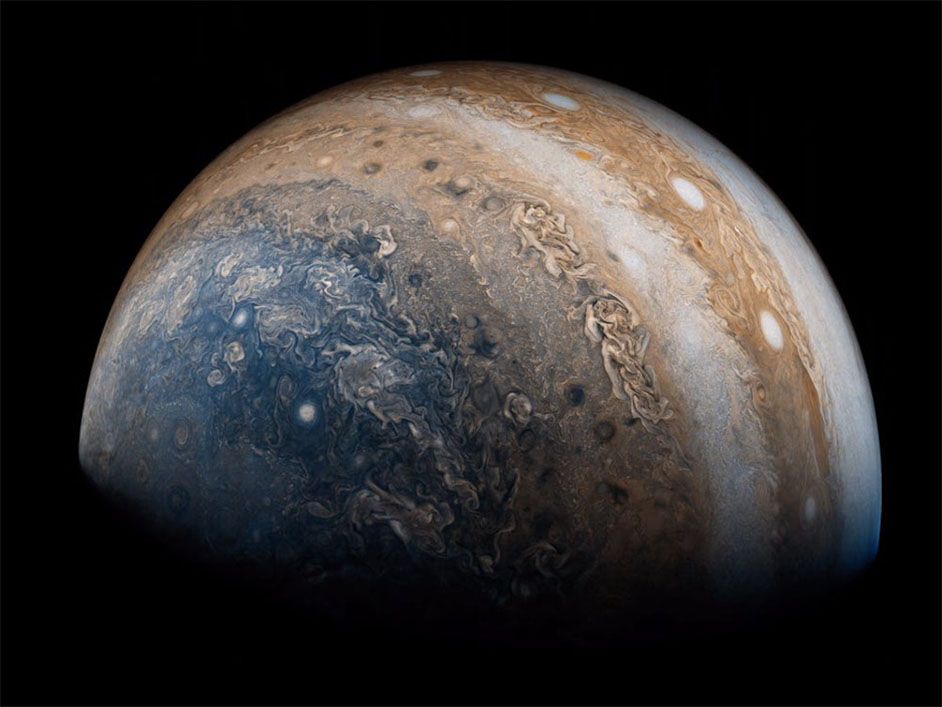NASA and NSF Award Li Nearly $1M
In the Milky Way galaxy, at planets far, far away, NASA missions captured data to help scientists better comprehend the atmosphere of Jupiter, Saturn and our own planet Earth.

University of Houston planetary scientist Liming Li, an associate professor in the Department of Physics, is continuing his studies of giant planets thanks to new grants from NASA and the National Science Foundation.
“In recent years, my research group has been focused on the studies of the internal heat and solar energy of planets and moons,” said Li, a faculty member of UH’s College of Natural Sciences and Mathematics. “But understanding the weather of giant planets, their clouds, storms, winds, vortices and waves, is my long-term interest.”
Jupiter’s Volatile Weather Could Aid Scientists in Study of Earth
Li said his research funded through NASA’s grant could not only provide scientists important information about the atmosphere of giant planets, but it could lead to a fuller understanding of the weather and climate on our home planet. This can happen in two ways.
First, Jupiter has one of the most dynamic atmospheres in our solar system, Li explains, making it an ideal laboratory of fluid mechanics that can’t be found elsewhere. Second, Jupiter has weather patterns including lightning and thunderstorms. Studies also predict climate change on the planet.
“The comparative studies between Jupiter and Earth will provide a wider perspective of the weather and climate on Earth,” Li said.
Using Jupiter and Saturn as Examples
The goal of Li’s NSF grant is to investigate the role of clouds in the atmospheric systems of giant planets and exoplanets, which are planets outside our solar system. The study will provide basic characteristics of clouds on Jupiter and Saturn that can serve as the basis of knowledge for exploration of exoplanet atmospheric systems.
To reach the goal, Li’s research group will use images from NASA’s now-completed Cassini spacecraft mission taken at different geometries, wavelengths and polarizations to observe and analyze the distribution and characteristics of clouds on Jupiter and Saturn.
This grant proposal was based on Li’s 2018 paper on Jupiter’s solar energy and internal heat published in Nature Communications.
Combining Space Missions to Capture Full Picture
Because of Jupiter’s axis, size and distance from the sun, it is difficult to study in relation to Earth.
The tilting angle of Jupiter’s rotation axis is only about three degrees, which means the two hemispheres receive almost the same solar heating. Earth has a tilting angle rotation axis of about 23 degrees. Because of Jupiter’s axis tilt, it should not have significant seasonal changes. But its distance from the sun changes throughout its orbital period causes the solar energy reaching Jupiter to fluctuate over time.
“Solar energy is one of main driving forces for the weather and climate on Jupiter,”
Li said. “The variation of solar energy will cause Jupiter’s atmospheric system to
change.”
He said some studies have provided hints of Jupiter’s seasonal variations in its atmosphere,
but a global picture is still lacking because a single space mission cannot cover
all of Jupiter.
One Jupiter year, which is the time it takes to orbit around the sun, is about 12 Earth years. That means one season of Jupiter is about three Earth years.
By combining the observations from multiple NASA missions, Li can overcome this challenge.
The Cassini and New Horizons missions provide useful observations for low and middle latitudes. Li adds that NASA’s Juno mission, the first polar orbit spacecraft to Jupiter, provides high-quality observations of polar regions. Additionally, Hubble Space Telescope provides long-term continuous observations of Jupiter; however, the images are not as clear because of the telescope’s distance from Jupiter.
Li received $474,981 from NASA and $462,112 from the NSF. The grant period lasts three years.
- Rebeca Trejo, College of Natural Sciences and Mathematics